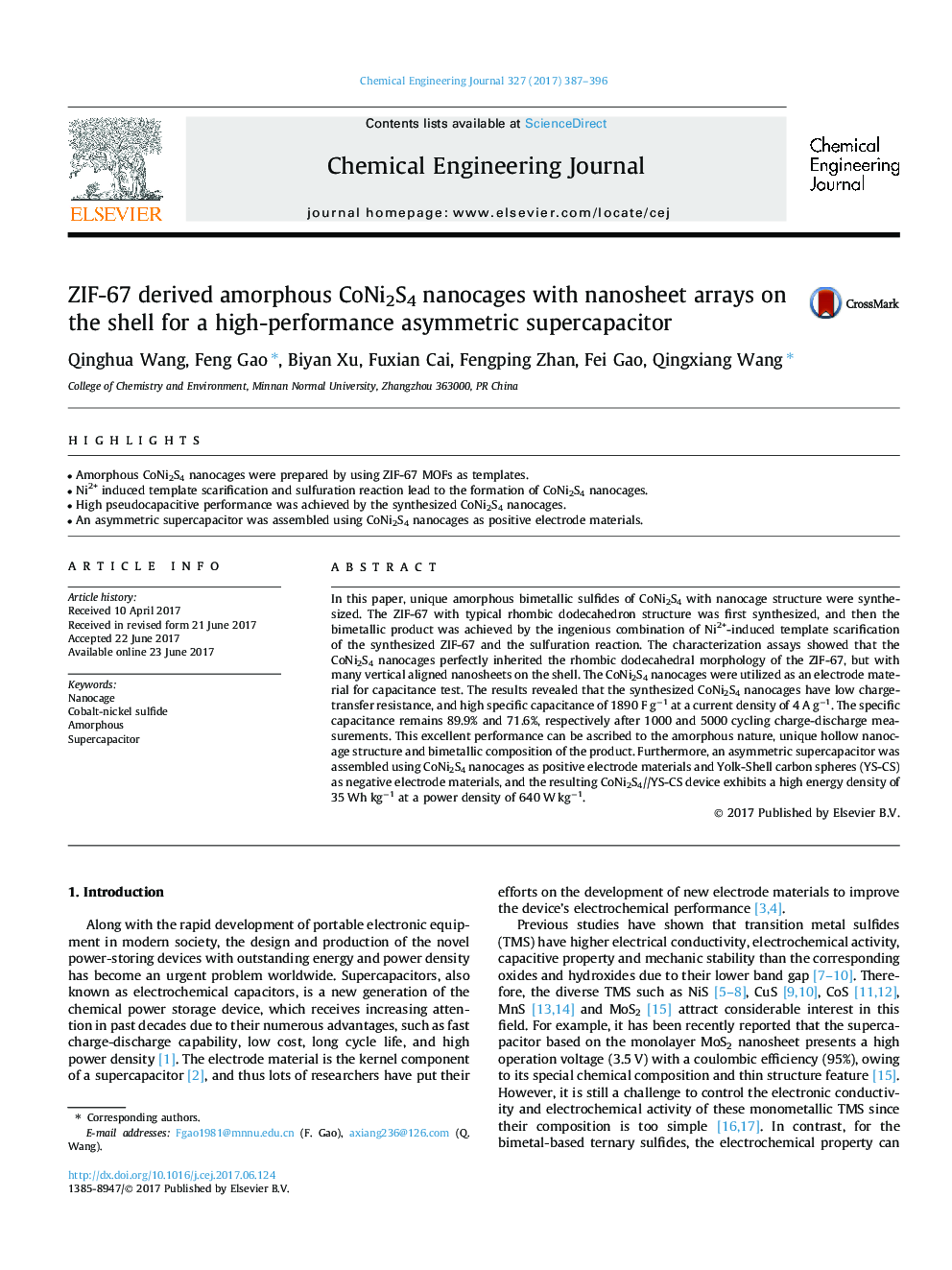| Article ID | Journal | Published Year | Pages | File Type |
|---|---|---|---|---|
| 6465184 | Chemical Engineering Journal | 2017 | 10 Pages |
â¢Amorphous CoNi2S4 nanocages were prepared by using ZIF-67 MOFs as templates.â¢Ni2+ induced template scarification and sulfuration reaction lead to the formation of CoNi2S4 nanocages.â¢High pseudocapacitive performance was achieved by the synthesized CoNi2S4 nanocages.â¢An asymmetric supercapacitor was assembled using CoNi2S4 nanocages as positive electrode materials.
In this paper, unique amorphous bimetallic sulfides of CoNi2S4 with nanocage structure were synthesized. The ZIF-67 with typical rhombic dodecahedron structure was first synthesized, and then the bimetallic product was achieved by the ingenious combination of Ni2+-induced template scarification of the synthesized ZIF-67 and the sulfuration reaction. The characterization assays showed that the CoNi2S4 nanocages perfectly inherited the rhombic dodecahedral morphology of the ZIF-67, but with many vertical aligned nanosheets on the shell. The CoNi2S4 nanocages were utilized as an electrode material for capacitance test. The results revealed that the synthesized CoNi2S4 nanocages have low charge-transfer resistance, and high specific capacitance of 1890 F gâ1 at a current density of 4 A gâ1. The specific capacitance remains 89.9% and 71.6%, respectively after 1000 and 5000 cycling charge-discharge measurements. This excellent performance can be ascribed to the amorphous nature, unique hollow nanocage structure and bimetallic composition of the product. Furthermore, an asymmetric supercapacitor was assembled using CoNi2S4 nanocages as positive electrode materials and Yolk-Shell carbon spheres (YS-CS) as negative electrode materials, and the resulting CoNi2S4//YS-CS device exhibits a high energy density of 35 Wh kgâ1 at a power density of 640 W kgâ1.
